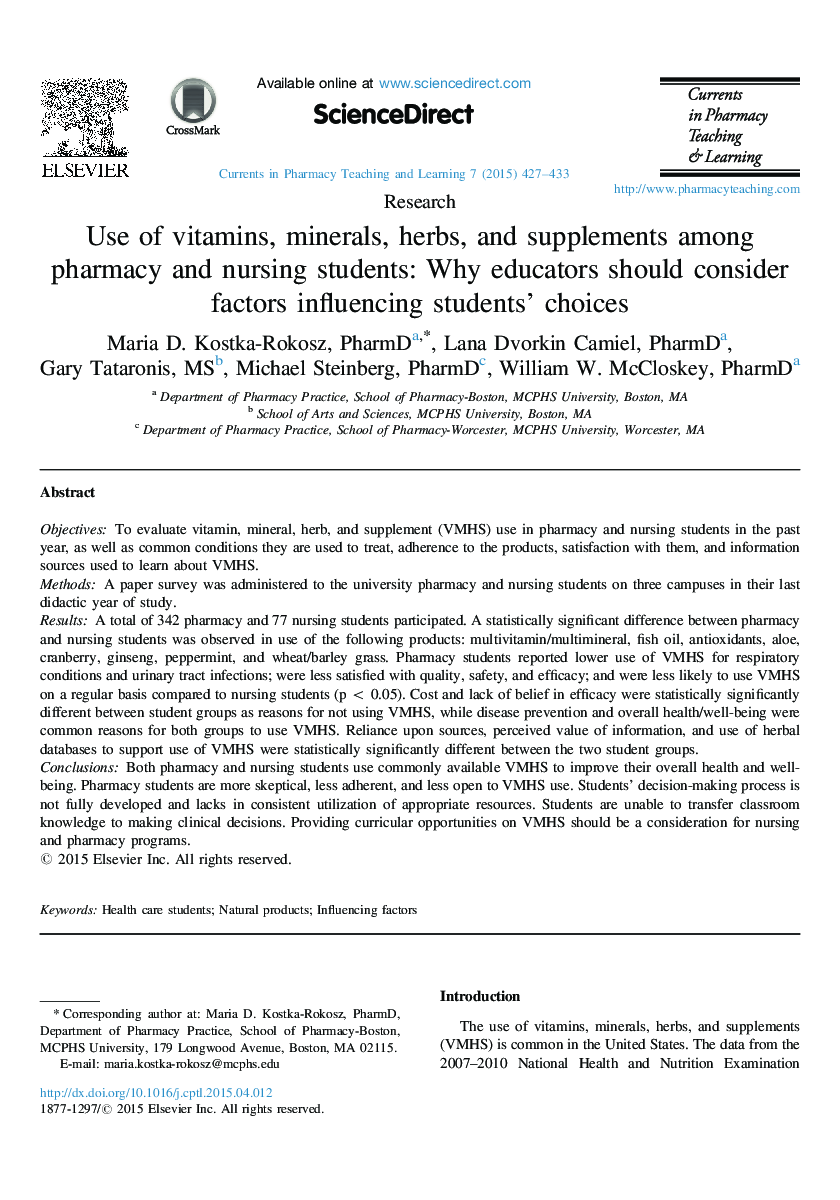| کد مقاله | کد نشریه | سال انتشار | مقاله انگلیسی | نسخه تمام متن |
|---|---|---|---|---|
| 352980 | 618762 | 2015 | 7 صفحه PDF | دانلود رایگان |
ObjectivesTo evaluate vitamin, mineral, herb, and supplement (VMHS) use in pharmacy and nursing students in the past year, as well as common conditions they are used to treat, adherence to the products, satisfaction with them, and information sources used to learn about VMHS.MethodsA paper survey was administered to the university pharmacy and nursing students on three campuses in their last didactic year of study.ResultsA total of 342 pharmacy and 77 nursing students participated. A statistically significant difference between pharmacy and nursing students was observed in use of the following products: multivitamin/multimineral, fish oil, antioxidants, aloe, cranberry, ginseng, peppermint, and wheat/barley grass. Pharmacy students reported lower use of VMHS for respiratory conditions and urinary tract infections; were less satisfied with quality, safety, and efficacy; and were less likely to use VMHS on a regular basis compared to nursing students (p < 0.05). Cost and lack of belief in efficacy were statistically significantly different between student groups as reasons for not using VMHS, while disease prevention and overall health/well-being were common reasons for both groups to use VMHS. Reliance upon sources, perceived value of information, and use of herbal databases to support use of VMHS were statistically significantly different between the two student groups.ConclusionsBoth pharmacy and nursing students use commonly available VMHS to improve their overall health and well-being. Pharmacy students are more skeptical, less adherent, and less open to VMHS use. Students’ decision-making process is not fully developed and lacks in consistent utilization of appropriate resources. Students are unable to transfer classroom knowledge to making clinical decisions. Providing curricular opportunities on VMHS should be a consideration for nursing and pharmacy programs.
Journal: Currents in Pharmacy Teaching and Learning - Volume 7, Issue 4, July–August 2015, Pages 427–433
